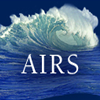
|
Ralph Foster Principal Physicist rcfoster@uw.edu Phone 206-685-5201 |
Research Interests
Boudary Layer Turbulence, Remote Sensing
Biosketch
Dr. Foster's primary research interest is the dynamics of atmospheric planetary boundary layer (PBL) turbulence with an emphasis on improving PBL parameterization in global and mesoscale models. Of particular interest is the role of coherent structures on fluxes in the PBL and their effect on air-sea fluxes. Previous work has been primarily on theoretical models and numerical simulations of coherent structures and their effects.
The majority of his current research involves analysis of satellite remote sensing data products, especially scatterometer surface wind data and synthetic aperture radar (SAR) imagery of the ocean surface. The current scatterometers provide nearly global daily retrievals of the surface wind vectors over the world's oceans on 25 km footprints. Often clear signatures of atmospheric PBL eddies and organized flow are imaged by SAR as a result of the wind stress acting on the sea surface. He is currently working towards a better understanding of the air-sea momentum transfer and how it manifests in SAR imagery. A long-term goal is to integrate theoretical analyses, numerical simulation, observational and remote sensing studies in order to improve understanding of coherent structures and to incorporate their non-local effects in operational PBL parameterizations.
Education
B.S. Physics, University of California - Berkeley, 1983
Ph.D. Atmospheric Sciences, University of Washington - Seattle, 1996
Projects
|
Sensing the Ocean with Marine Radars (SOMAR) Sensing the Ocean with Marine Radars is a series of workshops concentrating on the scientific aspects of marine radar ocean applications. They provide a forum for researchers to present and discuss their results, swap data and algorithms, and identify priorities for future research. The 3rd international workshop was held in July 2015 in Seattle, WA. |
1 Jul 2015
|
|
Publications |
2000-present and while at APL-UW |
A multi-tagged SAR ocean image dataset identifying atmospheric boundary layer structure in winter tradewind conditions Wang, C., and 7 other including R. Foster, "A multi-tagged SAR ocean image dataset identifying atmospheric boundary layer structure in winter tradewind conditions," Geosci. Data J., 12, doi:10.1002/gdj3.282, 2025. |
More Info |
1 Jan 2025 |
|||||||
|
A dataset of multi-tagged sea surface roughness synthetic aperture radar (SAR) satellite images was established near Barbados from January to June 2016 to 2019. It is an advancement of the Sentinel-1 Wave Mode TenGeoP-SARwv (a labelled SAR imagery dataset of 10 geophysical phenomena from Sentinel-1 wave mode) dataset that targets SAR marine atmospheric boundary layer (MABL) coherent structures. Twelve tags define roll vortices, convective cells, mixed rolls and convective cells, fronts, rain cells, cold pools and low winds. Examples are provided for each signature. The final dataset is comprised of 2100 Sentinel-1 wave mode SAR images acquired at 36 incidence angle over an 8°â€‰x 8° region centered at 51° W, 15° N. Each image is tagged with one or multiple phenomena by five experts. This strategy extends the TenGeoP-SARwv by identifying coexisting phenomena within a single SAR image and by the addition of mixed roll/cell states and cold pools. The dataset includes PNG-formatted SAR image files along with two text files containing the file name, the central latitude/longitude, expert tags for each image, and all dataset metadata. There is a high degree of consensus among expert tags. The dataset complements existing hand-labelled ocean SAR image datasets and offers the potential for new deep-learning SAR image classification model developments. Future use is also expected to yield new insights into the tradewind MABL processes such as structure transitions and their relation to the stratification. |
|||||||||
Characterizing the atmospheric boundary layer for offshore wind energy using synthetic aperture radar imagery Stopa, J.E., D. Vandemark, R. Foster, M. Emond, A. Mouche, and B. Chapron, "Characterizing the atmospheric boundary layer for offshore wind energy using synthetic aperture radar imagery," Wind Energy, 27, 1340-1352, doi:10.1002/we.2933, 2024. |
More Info |
1 Nov 2024 |
|||||||
|
Measuring boundary layer stratification, wind shear, and turbulence remains challenging for wind resource assessment. In particular, larger eddy scales have the greatest impact on turbine load fluctuations, and there are few in situ methods to observe them adequately. Satellite remote sensing using synthetic aperture radar (SAR) is an alternative approach. In this study, eddy-related signatures in 704 high-resolution images are related to stratification through a bulk Richardson number (Ri) measured by a buoy near Martha's Vineyard, the US epicenter of offshore wind. Variations in SAR-observed atmospheric boundary layer eddies, or lack of them, correspond to specific Ri regimes. Accounting for strong vertical wind shear, typically under stable stratification, is critical for energy production and turbine loads, and SAR directly identifies these conditions by the absence of energetic eddies. SAR also provides a regional climatology of atmospheric stratification for offshore wind assessment, complementing other observations, and with potential application worldwide. |
|||||||||
Automated global classification of surface layer stratification using high-resolution sea surface roughness measurements by satellite synthetic aperture radar Stopa, J.E., C. Wang, D. Vandemark, R. Foster, A. Mouche, and B. Chapron, "Automated global classification of surface layer stratification using high-resolution sea surface roughness measurements by satellite synthetic aperture radar," Geophys. Res. Lett., 49, doi:10.1029/2022GL098686, 2022. |
More Info |
28 Jun 2022 |
|||||||
|
A three-state global estimator of marine surface layer atmospheric stratification is demonstrated using more than 600,000 Sentinel-1 synthetic aperture radar wave mode images at incidence angle ≈ 36.8°. Stratification is quantified using a bulk Richardson number, Ri, derived from collocated ERA5 surface analyses. The three stratification states are defined as unstable: Ri < –0.012, near-neutral: –0.012 < Ri < +0.001, and stable: Ri > +0.001. These boundaries are identified by the characteristic boundary layer coherent structures that form in these regimes and modulate the surface roughness imaged by the radar. An automated machine learning algorithm identifies the coherent structures impressed on the images. Data from 2016 to 2019 are used to examine spatial and temporal variation in these state estimates in terms of expected wind and thermal forcing. This new satellite-based approach for detecting air-sea stratification has implications for weather modeling and air-sea flux products. |
|||||||||






